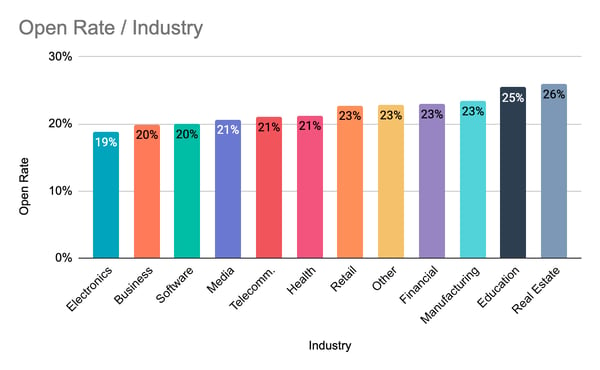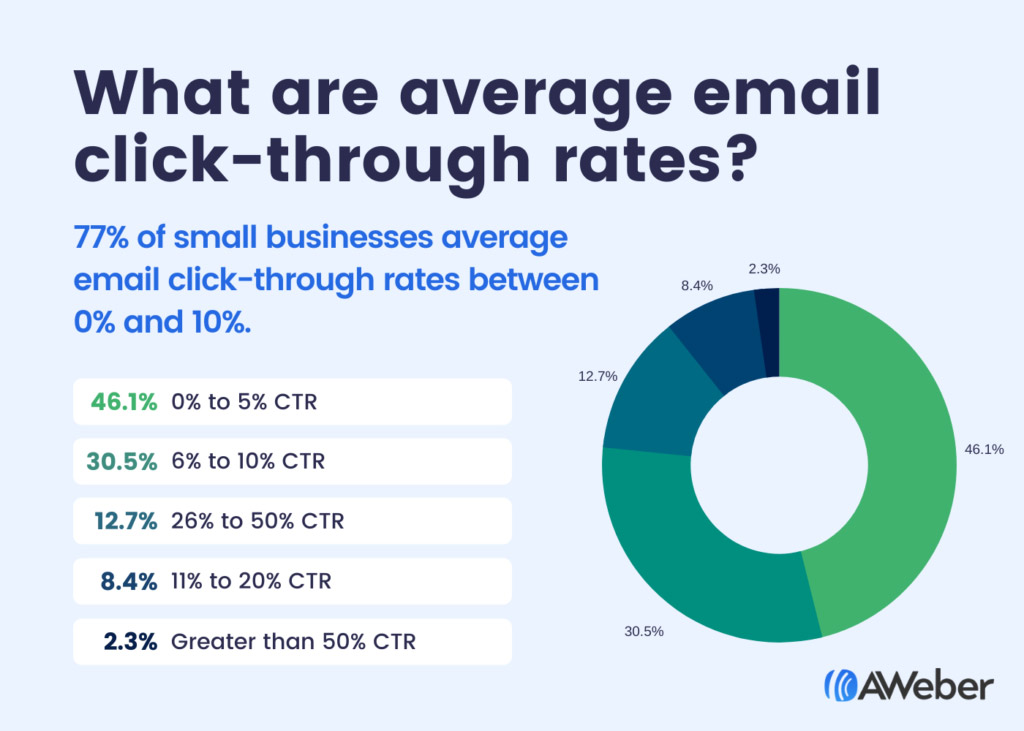How to Send an Effective B2B Marketing Email
Sending an effective B2B marketing email requires a clear understanding of your audience and their needs. Before you begin crafting your email, you should research your target audience to identify their pain points and challenges.
Before we do a deep dive into some practical tips you can apply to your next B2B email marketing campaign, listen very closely to what Gary Vaynerchuck has to say about the advantages B2B businesses have over B2C. You heard that right.
The key to B2B email marketing is to find out who the decision-maker is and to tailor each and every point of contact to that person in the organization. Bulk, generic messaging is not effective, and it wastes money.
Once you have this information, you can create a personalized email that addresses their specific needs. It’s important to keep your message concise and focused, with a clear call to action.
To make your email more engaging, you can use visual elements like images or videos, and include social proof such as customer testimonials or case studies.
Additionally, make sure your email is mobile-friendly, as many people access their emails on their mobile devices.
To increase the chances of your email being opened and read, use a compelling subject line that grabs your reader’s attention. Avoid using spammy or clickbait-like subject lines, as this can harm your credibility and lead to your emails being marked as spam.
Finally, make sure to test your email before sending it to your entire list. This can help you identify any formatting or technical issues and ensure that your email looks professional and polished.
Overall, sending an effective B2B marketing email involves understanding your audience, crafting a personalized message, and using engaging visual elements and social proof to increase the chances of your email being opened and read.
How to Write a Powerful B2B Marketing Email Subject Line
- Start with the main message: The subject line should be a concise summary of the main message or benefit of your email. Keep it short and sweet: The subject line should be no more than 6 to 8 words, as most email clients truncate longer subject lines.
- Use attention-grabbing words: Use powerful and attention-grabbing words like “new,” “exclusive,” “limited time,” “free,” “save,” and “urgent” to grab the reader’s attention.
- Personalize the subject line: Use the recipient’s name or company name in the subject line to make it more personalized.
- Use numbers: Use numbers in your subject line to make it more specific and compelling. For example, “5 tips to improve your sales strategy.”
- Create a sense of urgency: Use words that create a sense of urgency, such as “limited time,” “act now,” or “don’t miss out.”
- Make it relevant: Make sure the subject line is relevant to the recipient and their business needs.
- A/B test your subject lines: Test different subject lines to see which one resonates with your audience the most.
- Use metrics like open rates, click-through rates, and conversion rates to determine which subject line is the most effective.
What is the Average B2B Marketing Email Open Rate?
An open rate is a measure of how many people opened an email compared to how many people it was sent to. When it comes to B2B marketing emails, the average open rate is around 15%, and often much lower.
That means, for every 100 emails sent, around 15 people actually opened and read the email. However, this number can vary depending on factors such as the industry, the quality of the email list, and the subject line.
The actual open rate you can expect to achieve will depend on the industry you are sending to. For example, the Real Estate industry has a much higher open rate than the software industry according to these open rate benchmarks compiled by HubSpot.
It’s important to aim for a higher open rate by crafting personalized, engaging emails with attention-grabbing subject lines that appeal to the reader’s interests and needs.

What are the Best Email Marketing Software Options for B2B?
There are many email marketing software options available for B2B marketers, each with its own features and benefits. Here are some of the most popular options:
Mailchimp is a popular email marketing platform that offers a user-friendly interface, automation features, and integration with other marketing tools.
HubSpot is an all-in-one marketing software that includes email marketing capabilities, as well as customer relationship management, marketing automation, and other features.
Constant Contact is a user-friendly email marketing software that offers a range of templates and automation features, as well as integration with other marketing tools.
Campaign Monitor is a customizable email marketing platform that offers drag-and-drop email builders, automation features, and detailed reporting.
ActiveCampaign is a comprehensive marketing automation platform that includes email marketing, CRM, and other features, as well as advanced automation capabilities.
Sendinblue is a cloud-based email marketing software that offers email automation, transactional email capabilities, and integrations with other marketing tools.
When choosing an email marketing software for B2B, it’s important to consider factors such as the platform’s user-friendliness, automation features, customization capabilities, integration with other marketing tools, and pricing. It’s also a good idea to read reviews and compare the features and benefits of different options to find the one that best fits your business needs.
The Best Time to Send a Cold B2B Marketing Email
Determining the best time to send a cold B2B marketing email can be challenging, as it depends on a variety of factors such as the industry, target audience, and time zone. However, there are some general guidelines that can help you determine the best time to send a cold email.
Avoid Weekends
Most B2B professionals tend to take time off on weekends, so it’s best to avoid sending emails on Saturdays and Sundays.
Weekdays are generally better for sending cold emails, with Tuesday, Wednesday, and Thursday being the most popular days.
Consider time zones
If you’re targeting prospects in different time zones, it’s important to adjust your sending times accordingly. For example, if you’re targeting prospects on the West Coast of the United States and you’re based on the East Coast, you may want to send your emails later in the day to accommodate the time difference.
Test different times
Ultimately, the best time to send a cold email will depend on your specific audience and industry. It’s a good idea to test different sending times and track your open and response rates to determine what works best for you.
Focus on quality
While timing can play a role in the success of your cold email campaign, it’s important to focus on the quality of your message and the relevance of your offer to your target audience. Make sure your email is personalized, engaging, and provides value to the recipient.
By considering these factors and testing different sending times, you can increase the chances of your cold email being opened and responded to by your target audience.
Current Trends in B2B Email Marketing (2023)
B2B email marketing is constantly evolving, with new trends and best practices emerging all the time. Here are some of the current trends in B2B email marketing:
- Personalization: Personalization is a key trend in B2B email marketing, with marketers focusing on delivering personalized, relevant messages to their target audience. This includes using the recipient’s name, company name, and other personalized information in the email.
- Mobile optimization: More and more people are accessing their email on mobile devices, so it’s important for B2B marketers to optimize their emails for mobile devices. This includes using responsive design, shortening subject lines, and using clear, easy-to-read fonts.
- Interactive content: Interactive content, such as quizzes, polls, and surveys, is becoming increasingly popular in B2B email marketing. This type of content encourages engagement and can help increase the chances of the recipient taking action.
- Video content: Video content is another trend in B2B email marketing, as it can help increase engagement and provide a more engaging and interactive experience for the recipient.
- Artificial intelligence (AI): AI is being used in B2B email marketing to automate and personalize emails, as well as to analyze data and provide insights into the effectiveness of email campaigns.
- Segmentation and automation: B2B marketers are increasingly using segmentation and automation to deliver targeted, personalized messages to their target audience. This involves segmenting the email list based on factors such as job title, industry, and behavior, and then delivering automated, personalized messages based on these segments.
By staying up to date with these trends and incorporating them into your B2B email marketing strategy, you can increase the effectiveness of your campaigns and better engage with your target audience.
What is the Average B2B Marketing Email CTR?
CTR stands for Click-Through Rate, which is a measure of how many people clicked on a link in an email compared to how many people it was sent to. When it comes to B2B marketing emails, the average CTR is around 2.6%.
This means that for every 100 emails sent, around 2 to 3 people clicked on a link in the email. However, this number can vary depending on factors such as the quality of the email list, the relevance of the content, and the strength of the call-to-action.
It’s important to aim for a higher CTR by creating engaging emails with valuable content, clear and prominent calls-to-action, and mobile optimization to encourage clicks from recipients.

Final Thoughts
B2B email marketing can be challenging because businesses usually have a limited target audience compared to B2C email marketing, which targets a larger audience.
Furthermore, B2B email marketing often involves complex products or services that require a more personalized approach to successfully convert leads into customers. This means that the content of the emails needs to be carefully crafted to address the specific needs and pain points of the targeted businesses.
In addition, B2B email marketing requires a more in-depth understanding of the buying cycle and decision-making process, which can be longer and more complex than in B2C marketing. Therefore, businesses need to develop a strategic email marketing plan that is tailored to their specific audience, product or service, and marketing goals.
Overall, the key to successful B2B email marketing is to create valuable content that resonates with the target audience, build strong relationships with leads through personalization and follow-up, and continually analyze and optimize email campaigns to ensure they are driving results.